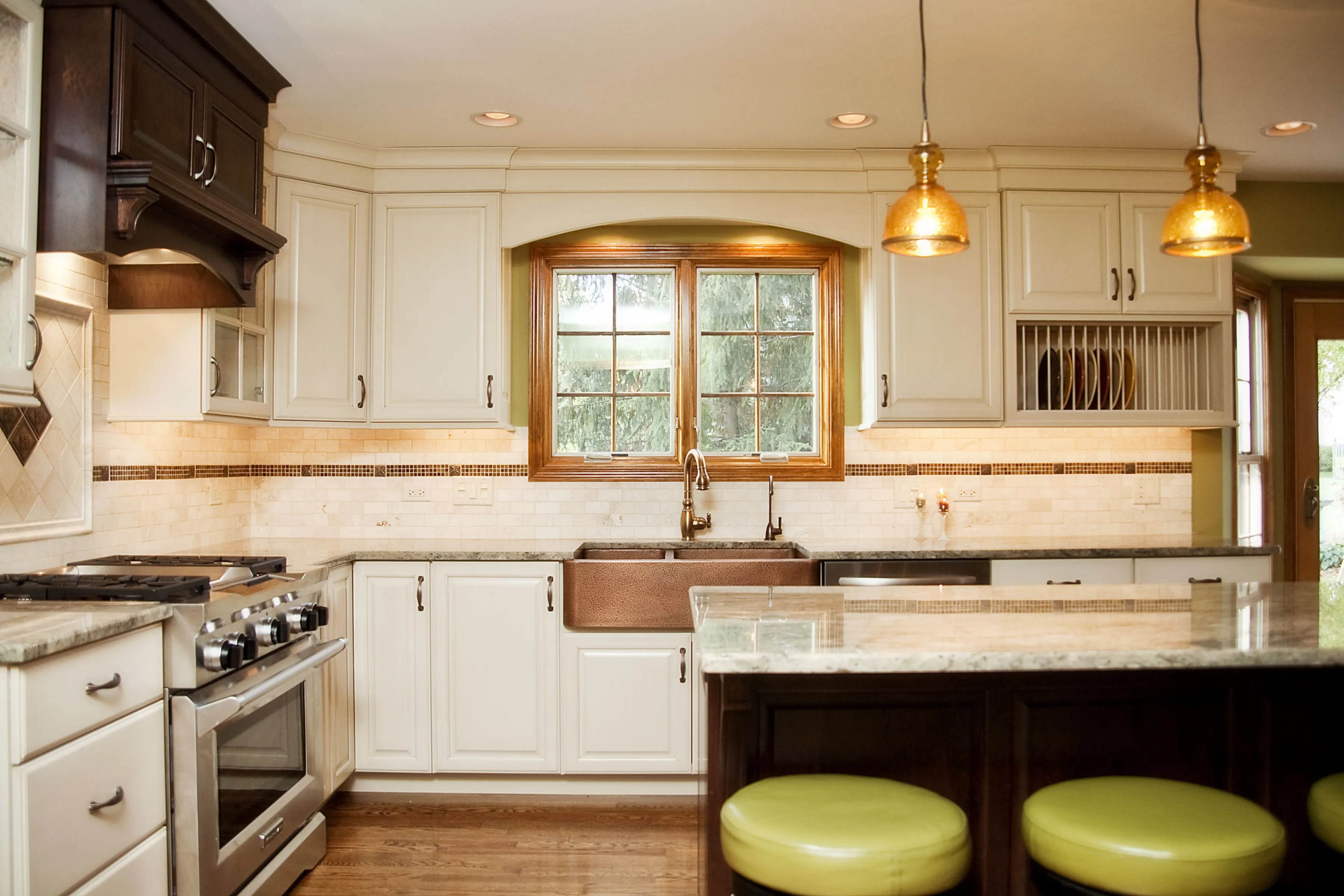Understanding Copper & White Kitchen Decor
Copper and white kitchen decor represents a timeless and elegant design choice that combines the warmth and richness of copper with the clean, fresh aesthetic of white. This combination creates a visually appealing and functional space. The use of copper introduces a touch of sophistication and luxury, while white provides a bright, airy backdrop that enhances the overall sense of space. This style is versatile, easily adaptable to various kitchen sizes and layouts, and suitable for both modern and traditional homes. In this guide, we’ll explore how to effectively incorporate copper and white elements to transform your kitchen into a stylish and inviting area. This is a perfect combination that provides a unique look and makes the kitchen a warm and inviting space. The contrast creates a harmonious blend of old and new.
The Allure of Copper in the Kitchen
Copper has a unique ability to elevate the kitchen’s overall design. Its inherent warmth and the way it reflects light create a welcoming ambiance. The material’s natural color variations add depth and visual interest, making it a standout feature against a backdrop of white. From a design perspective, copper complements a wide range of styles, from rustic and farmhouse to modern and minimalist. Beyond aesthetics, copper is known for its durability and antimicrobial properties, making it a practical choice for kitchen applications. Its ability to age gracefully over time, developing a beautiful patina, ensures that copper elements maintain their charm and character for years to come. Copper’s versatility allows it to be used in various forms from cookware to hardware, making it an excellent addition to any kitchen.
Warmth and Sophistication
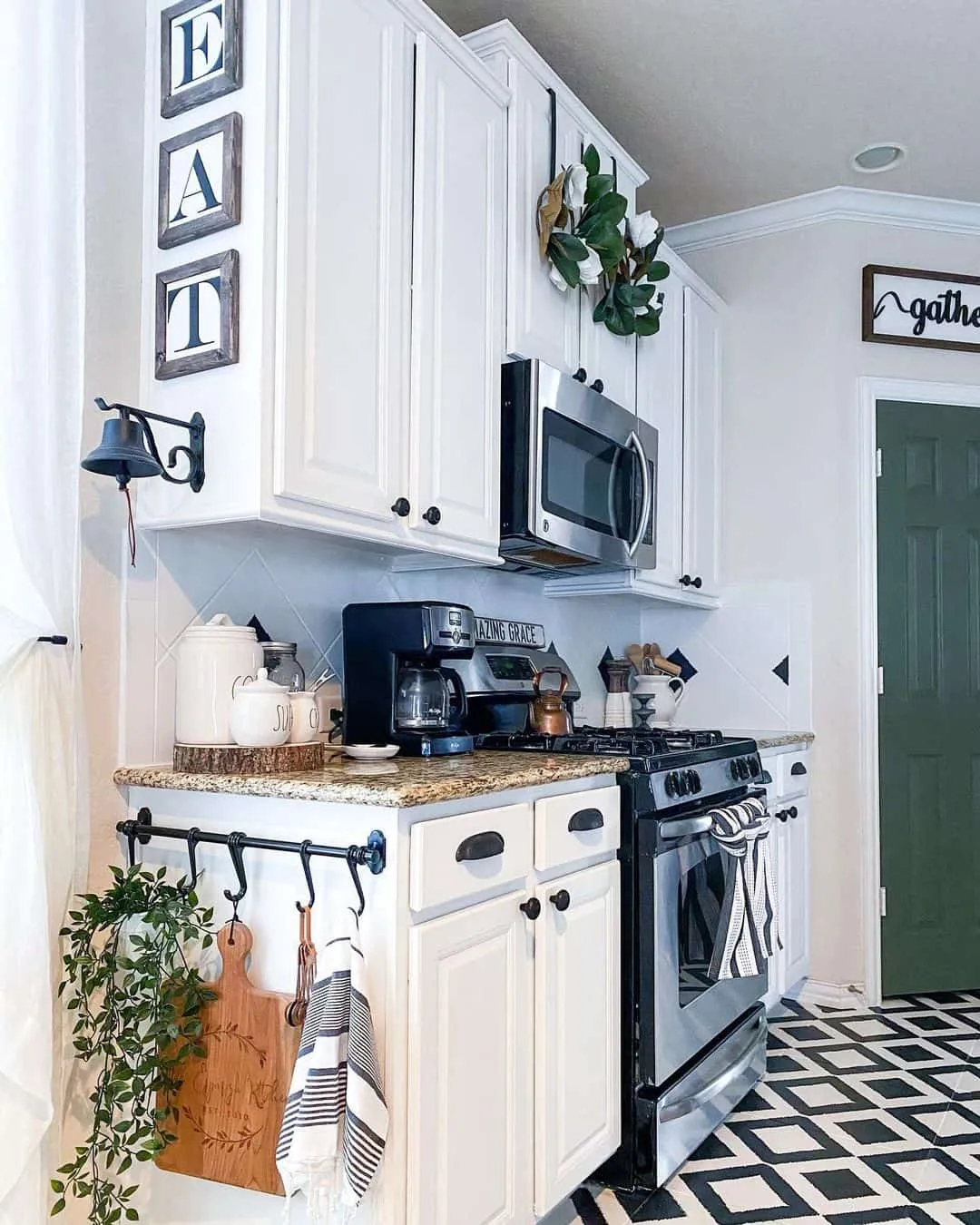
Copper’s inherent warmth introduces a sense of coziness that can often be missing in stark white kitchens. The metal’s reddish-brown tones create a visual contrast that prevents the space from feeling sterile or cold. When combined with white, copper elements such as fixtures, cookware, or decorative accents, add a layer of sophistication. This pairing is particularly effective in creating a balanced and inviting atmosphere. The use of copper can prevent the kitchen from feeling too minimalistic, adding a touch of richness and depth to the overall aesthetic. This is an excellent choice for a kitchen that is designed to be a welcoming place for cooking and gathering.
Durability and Practicality
Copper is a highly durable material, making it a practical choice for the kitchen. Its resistance to corrosion and wear and tear means that copper fixtures and cookware can withstand the rigors of daily use. In addition to its strength, copper has natural antimicrobial properties, which can help maintain a hygienic environment. This is particularly beneficial in the kitchen, where cleanliness is of utmost importance. The longevity of copper products ensures that they remain functional and attractive for many years, making it a sound investment for any homeowner. The ability to handle heat well makes copper an excellent option for cookware and other kitchen accessories. Copper offers many benefits beyond its aesthetic appeal.
Choosing the Right White Shade
Selecting the right shade of white is crucial for creating the perfect copper and white kitchen. The undertones of the white paint can significantly impact the overall aesthetic. Warmer whites with yellow or beige undertones can enhance the warmth of the copper, creating a cozy and inviting atmosphere. Cooler whites with gray or blue undertones can provide a more modern and crisp look, highlighting the brilliance of the copper. Consider the natural light in your kitchen. Spaces with ample natural light can handle cooler whites without appearing cold, while kitchens with less natural light may benefit from warmer shades to brighten the space. Testing different white samples in your kitchen before making a final decision is always recommended to ensure the chosen shade complements your copper accents and overall design.
The Impact of Lighting in White Kitchens
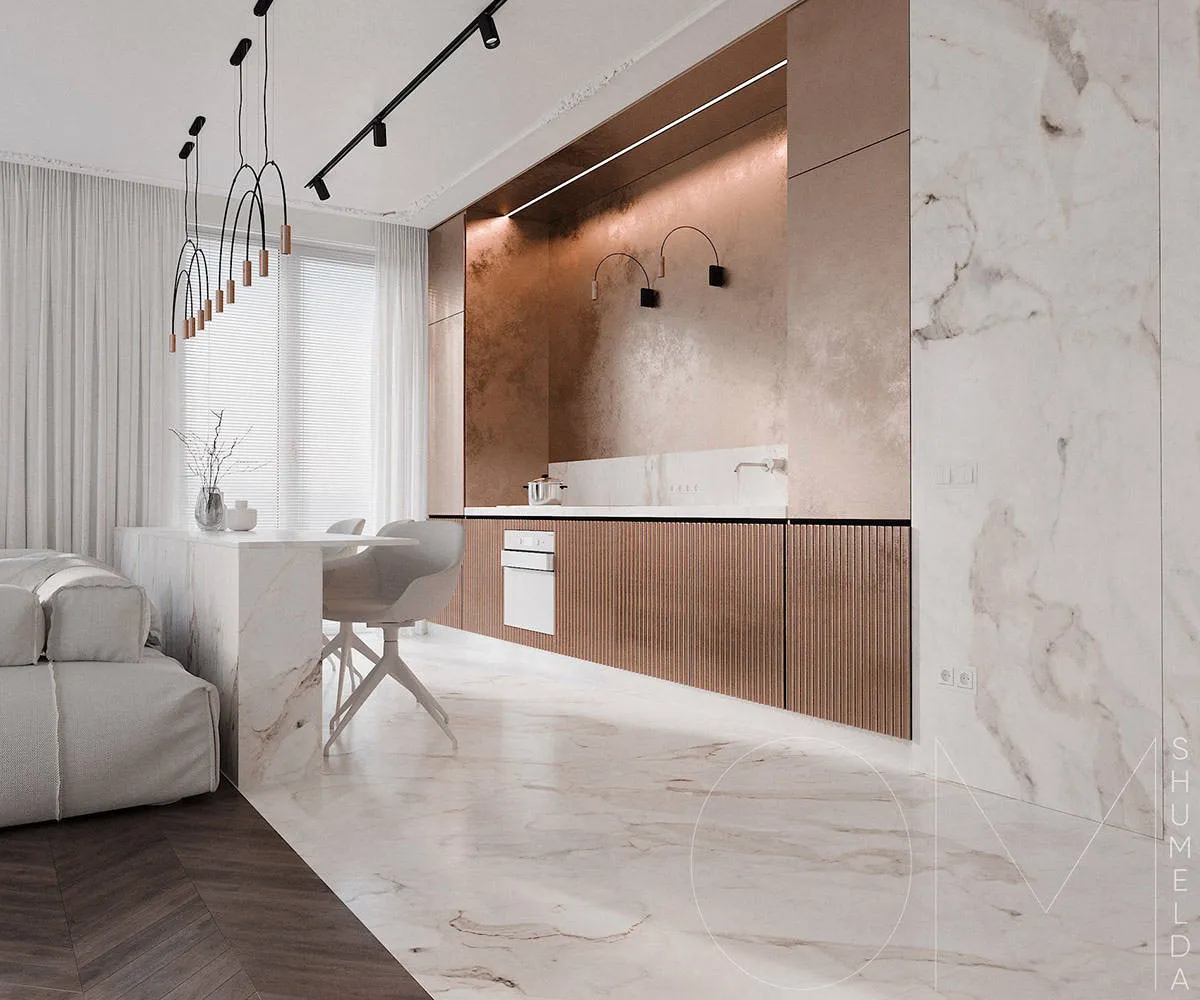
Lighting plays a vital role in white kitchens, influencing both the functionality and the ambiance. The right lighting can make a white kitchen feel bright, open, and welcoming. Consider a layered lighting approach, combining ambient, task, and accent lighting. Ambient lighting, such as recessed ceiling lights, provides overall illumination. Task lighting, like under-cabinet lights and pendant lights over the island, illuminates specific work areas. Accent lighting, using spotlights or decorative fixtures, can highlight copper accents and add visual interest. The type of bulbs used also matters. LED bulbs are energy-efficient and come in various color temperatures. Warm white bulbs enhance the cozy feel, while cool white bulbs offer a modern look. Ensure your lighting choices complement the white paint and copper accents to create a balanced and beautiful kitchen.
Strategic Placement of Copper Accents
Strategic placement of copper accents is key to achieving a balanced and visually appealing design. Consider how copper elements can enhance functionality while adding to the aesthetic appeal of your kitchen. Copper hardware on cabinets and drawers, such as pulls and knobs, can add a subtle yet impactful touch. Copper cookware, displayed on open shelving or hanging racks, provides a rustic charm. Copper range hoods and backsplashes create a focal point. Remember to avoid overdoing it. A few well-placed copper accents are more effective than a space overloaded with the material. The aim is to create a harmonious balance between the copper and white elements, allowing each to complement the other. This balance ensures that the design is aesthetically pleasing and the kitchen feels cohesive.
Copper Hardware and Fixtures
Copper hardware and fixtures can significantly enhance the overall look of your kitchen. Consider using copper for cabinet pulls, knobs, faucets, and lighting fixtures. Copper hardware adds a touch of elegance and warmth, contrasting beautifully with white cabinetry. Copper faucets and sinks bring a luxurious feel to the kitchen. For lighting, copper pendant lights or sconces can serve as both functional and decorative elements, providing task lighting while adding a touch of sophistication. When selecting copper hardware and fixtures, consider the finish. Polished copper offers a shiny, modern look, while brushed or antique copper provides a more traditional, rustic charm. Ensure that the hardware and fixtures complement each other and the overall style of your kitchen.
Copper Cookware and Utensils
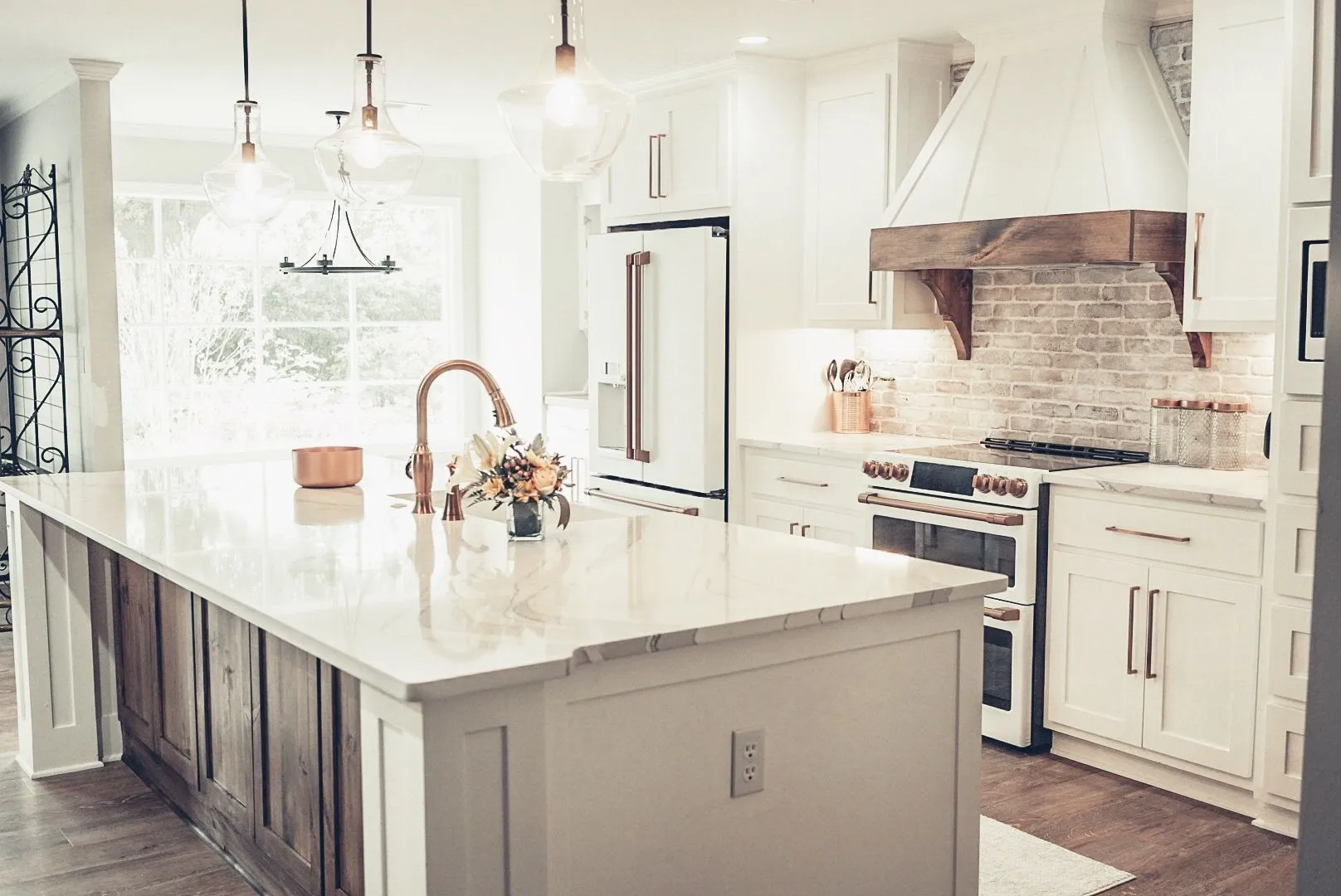
Incorporating copper cookware and utensils is another excellent way to introduce copper into your kitchen. Copper cookware not only offers exceptional heat conductivity for even cooking, but it also serves as a beautiful display piece. Consider hanging copper pots and pans from a rack above your island or displaying them on open shelving. Copper utensils, such as measuring spoons, whisks, and spatulas, add a touch of elegance to the kitchen. When choosing copper cookware, ensure that the interiors are lined with stainless steel to prevent the copper from reacting with food. Displaying copper cookware and utensils provides a visual interest while adding to the functionality of the kitchen. The combination of functionality and aesthetic value makes copper cookware a great addition.
Integrating White Elements for Balance
White serves as a crucial backdrop, allowing copper accents to shine. White cabinets, countertops, backsplashes, and walls provide a clean, bright, and versatile foundation. This creates a visual contrast that highlights the warmth and beauty of the copper elements. The balance between white and copper prevents the kitchen from feeling overwhelming. It allows the copper accents to become focal points without cluttering the space. The use of white also makes the kitchen appear larger and more open, creating a more inviting environment. The choice of white elements depends on personal style preferences, but it is essential to strike a balance to achieve a visually appealing and functional kitchen. This balance is the key to creating a harmonious and elegant design.
White Cabinetry and Countertops
White cabinetry and countertops form the foundation of a copper and white kitchen design. White cabinets provide a clean, modern look, offering a neutral canvas that allows copper accents to stand out. Choosing the right style of cabinets is essential. Shaker-style cabinets are versatile and work well with various design styles. Slab-front cabinets offer a sleek, contemporary look. White countertops, whether quartz, marble, or solid surface, complement the cabinets and provide a bright workspace. Consider the texture and finish of the countertops. Matte finishes offer a more understated look. Glossy surfaces add a touch of luxury. Combining white cabinetry and countertops creates a cohesive and visually appealing base for your kitchen.
White Backsplashes and Walls
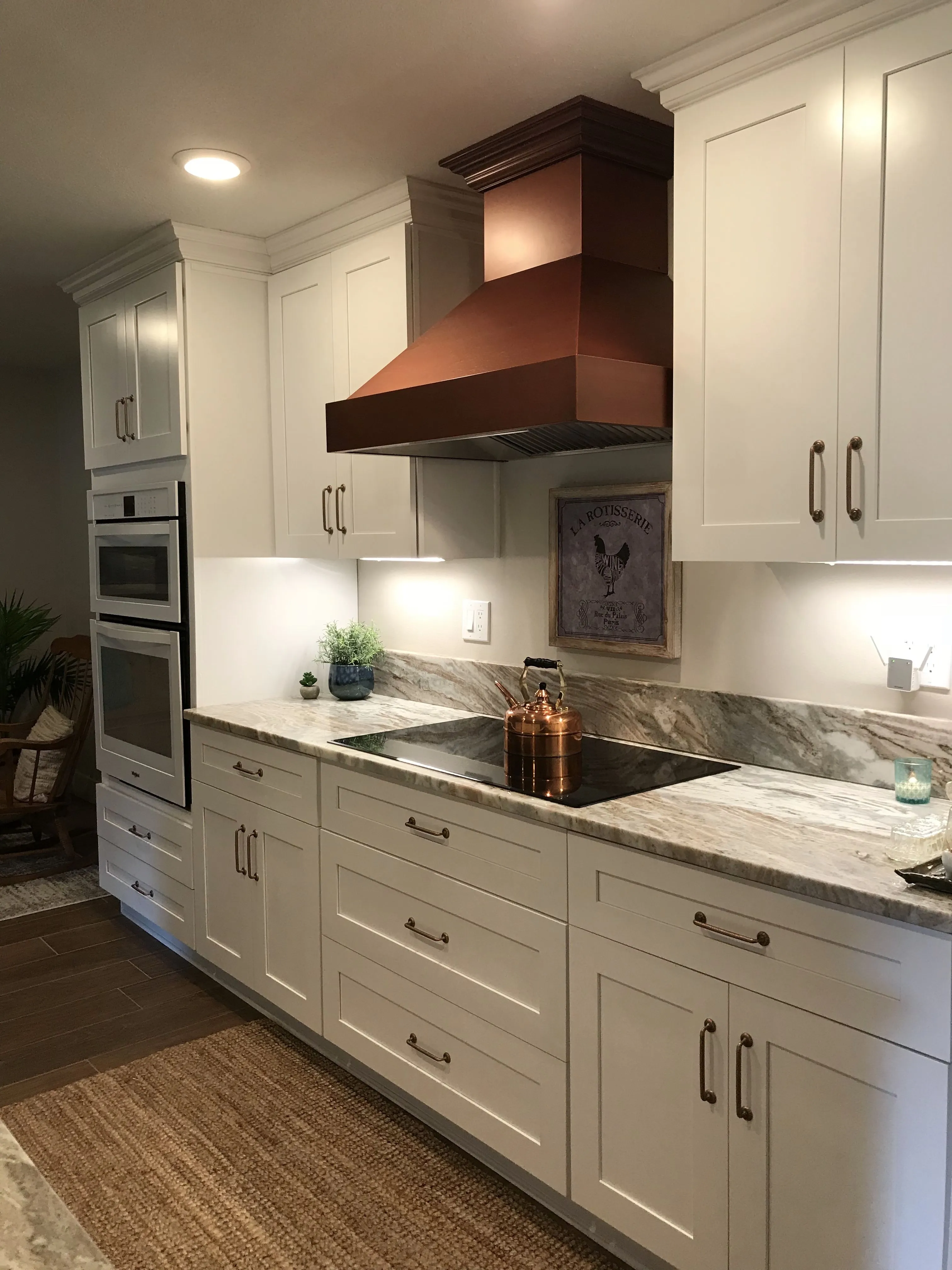
White backsplashes and walls enhance the brightness and openness of your kitchen. White backsplashes protect the walls and provide a visually clean surface, while walls create a neutral backdrop. Consider using subway tiles, mosaic tiles, or large-format tiles for your backsplash. The choice depends on your preferred style. Subway tiles are classic and versatile. Mosaic tiles add visual interest. Large-format tiles create a sleek, modern look. Paint the walls with a durable, washable white paint. This ensures that the walls are easy to maintain. White walls and backsplashes reflect light, making the kitchen feel brighter and more spacious. This design choice provides the perfect canvas for copper accents.
Color Palette and Design Inspiration
When designing a copper and white kitchen, it is essential to consider the overall color palette and draw inspiration from various sources. Beyond copper and white, you can incorporate other colors to add depth and personality. Gray, black, and wood tones complement copper and white. Gray can add a touch of sophistication. Black can create contrast and depth. Wood tones provide warmth and texture. Draw inspiration from design magazines, online resources, and showrooms to gather ideas. Collect images of kitchens you like. Identify the elements that appeal to you. Use these resources to create a mood board. This will help you visualize your design and ensure that the elements work together to create a cohesive and beautiful kitchen.
Mixing Metals and Textures
To create a truly dynamic kitchen, consider mixing metals and textures. While copper should be the star, incorporating other metal accents can add visual interest. Brass or gold can complement copper. Stainless steel adds a sleek, modern touch. Mixing textures can also enhance the design. Combine smooth surfaces, such as countertops and cabinets, with textured elements, such as a brick backsplash or woven bar stools. The key is to maintain balance. Use different materials. The goal is to create a layered and inviting space. Mixing metals and textures introduces depth and sophistication. It transforms your kitchen into a personalized and stylish space.
Creating Cohesive Design
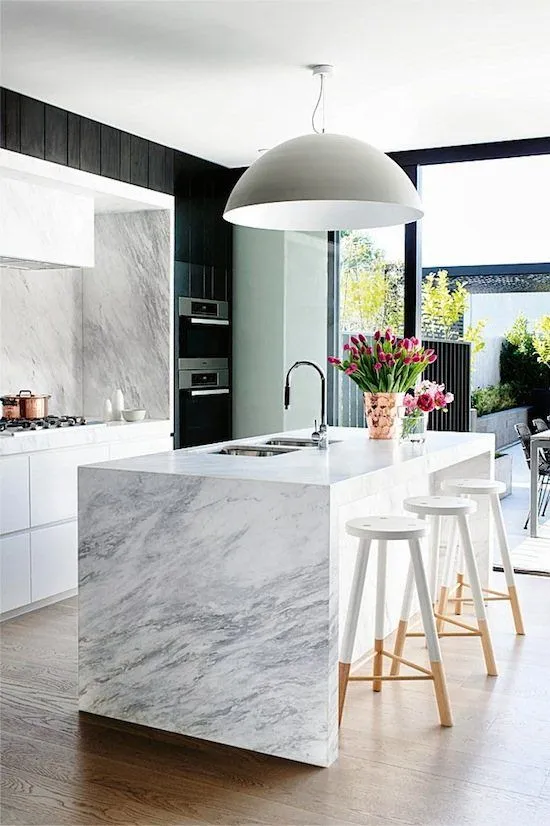
A cohesive design ensures that all elements of your kitchen work together harmoniously. Start by establishing a consistent style. Whether you prefer modern, rustic, or transitional, let your chosen style guide your selections. Choose a color palette that includes white, copper, and accent colors that complement each other. Ensure that the hardware, fixtures, and accessories align with your style and color scheme. Pay attention to the details. Consider the finish of the copper hardware and the style of your lighting fixtures. Ensure that all these choices reflect your personality and enhance the overall look. The consistent choices are the foundation of a cohesive design.
Finalizing Your Copper and White Kitchen
Finishing touches are crucial for completing your copper and white kitchen. Add decorative elements to personalize the space. Consider adding copper accessories, such as vases, bowls, and trays. Incorporate textiles, such as curtains, rugs, and kitchen towels, to add texture and warmth. Display artwork or plants to bring life and personality to the space. Ensure that the kitchen is functional. Arrange your appliances, cookware, and utensils. Arrange the kitchen to create a functional and inviting space. These final touches complete the design and make your kitchen both beautiful and practical. These finishing touches allow the kitchen to fully reflect the homeowner’s personality.
Maintaining and Cleaning Copper
Proper maintenance is essential to keep your copper elements looking their best. Copper naturally develops a patina over time, which some people find appealing. If you prefer a shiny finish, you can polish copper regularly. Use a copper cleaner or a mixture of lemon juice and baking soda to remove tarnish. Rinse the copper thoroughly and dry it with a soft cloth. For everyday cleaning, use mild soap and water. Avoid abrasive cleaners that can scratch the surface. Protecting your copper elements from excessive moisture and heat will help maintain their appearance. Regular maintenance ensures that your copper accents retain their beauty and charm.
Sources for Inspiration
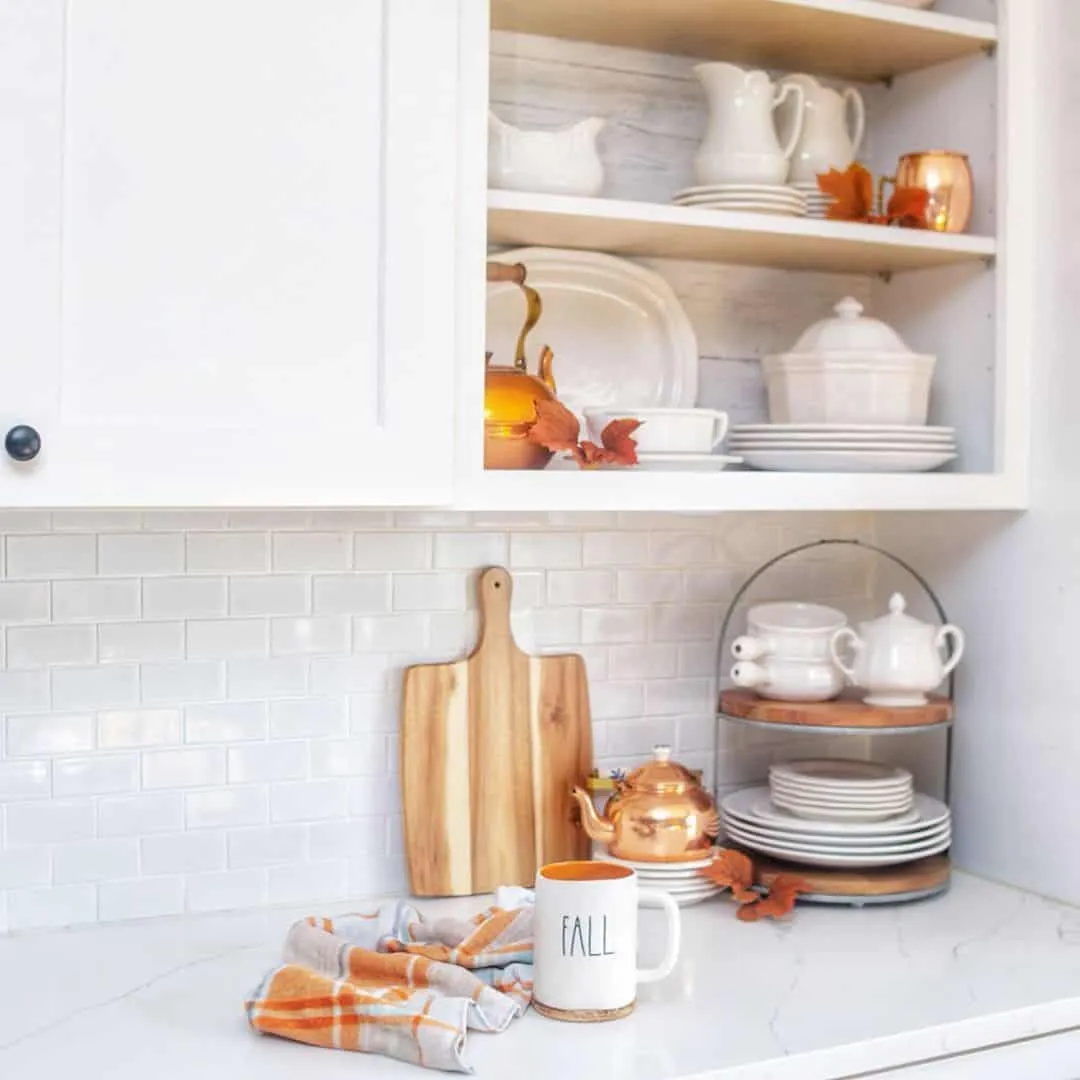
Gathering inspiration from various sources is essential for designing your copper and white kitchen. Explore design magazines, websites, and social media platforms. Houzz, Pinterest, and Instagram are excellent sources for kitchen design ideas. Visit showrooms and home design stores to see examples of copper and white kitchens in person. Consider hiring a professional interior designer. A designer can help you create a cohesive and personalized design. By exploring these resources and gathering inspiration, you can create a beautiful and functional kitchen that reflects your personal style. Use these resources to develop your design and create the kitchen of your dreams.
